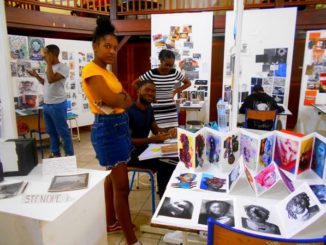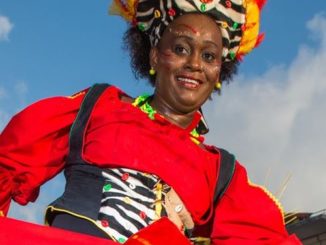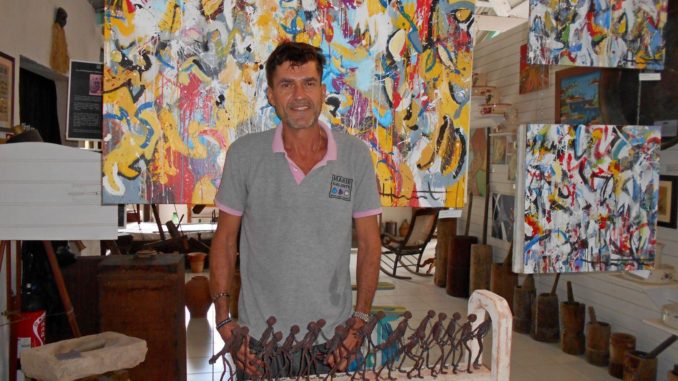
Since 2012, Kréol West Indies opened its doors in the Guadeloupean archipelago. This gallery-museum which combines contemporary art and ancient artifacts and organizes events dedicated to the living arts was founded by Vincent Nicaudie. It is frequented by a local and tourist clientele.
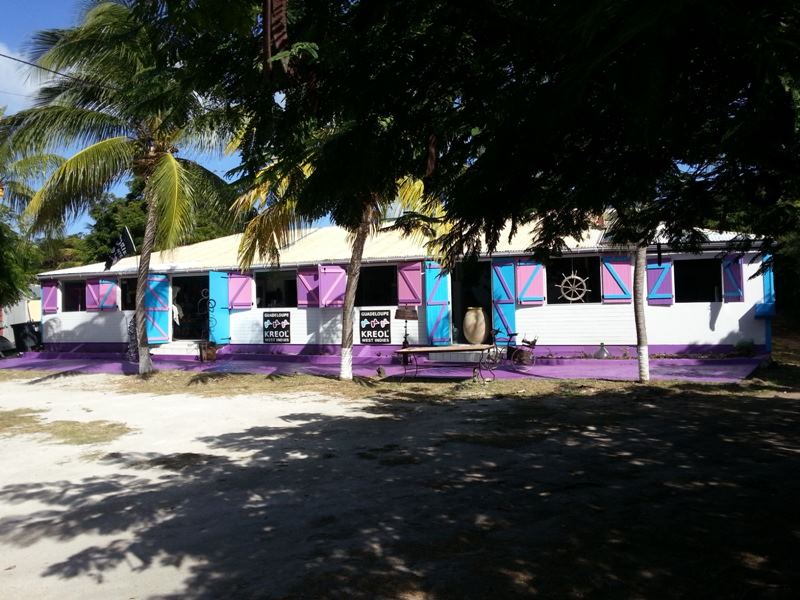
Kréol West Indies is located in two places in the Guadeloupe archipelago: the first was opened, in 2012, in the town of Grand-Bourg on the island of Marie-Galante; the second, in 2015, on the long road to the Pointe des Châteaux in the town of Saint-François, Guadeloupe.
The man behind this relatively special concept is Vincent Nicaudie. Originally from the south west of France, he spent his childhood in Africa. He landed in Guadeloupe, more than thirty years ago, and managed hotels in Saint Barthélemy, Martinique and Guadeloupe. “My last experience as a manager was a failure so, instead of falling apart, I thought about how to bounce back and I built the “Kréol West Indies” project. For me, it was natural because as soon as I arrived here, I had started collecting ancient objects, I was interested in the history of the Caribbean, everything relating to ethno-archeology, the slave trade etc. I am also a Caribbean art enthusiast, especially painting. In 2012, I had the idea of combining my two passions by creating an establishment which could serve both as a museum and an art gallery”, he told.

Understanding the West Indian society
Not wanting to do things by halves, Vincent Nicaudie also thought carefully before choosing the name of this cultural space of a new type. He was inspired by the Caribbean “Kréol Jazz” from the album intitled “Andréa” by the famous Guadeloupean saxophonist and founder of “Caribbean Jazz Ensemble”, Germain Cécé who died in 1998. “Mr. Germain Cécé was a good friend of mine. I chose this spelling “Kréol” to remove the French influence from the word. In addition, the abbreviation of “Kréol West Indies” – KWI – represents the “kwi” (the calabash cut in two) so, the Amerindian language. It represents history, a symbolic significance”, he said.
In addition, Vincent Nicaudie became more “educated” by reading books about negritude by Aimé Césaire, “all world” by Édouard Glissant, alienation by Frantz Fanon or “Creolness” by Patrick Chamoiseau and Raphaël Confiant, among others. “It was important for me to understand, to assimilate the society in which I live. Today, I claim my Antillaniness, the more time passes, the more I feel West Indian. I learned about the past of Guadeloupe and the region where I live to understand people”, he said.
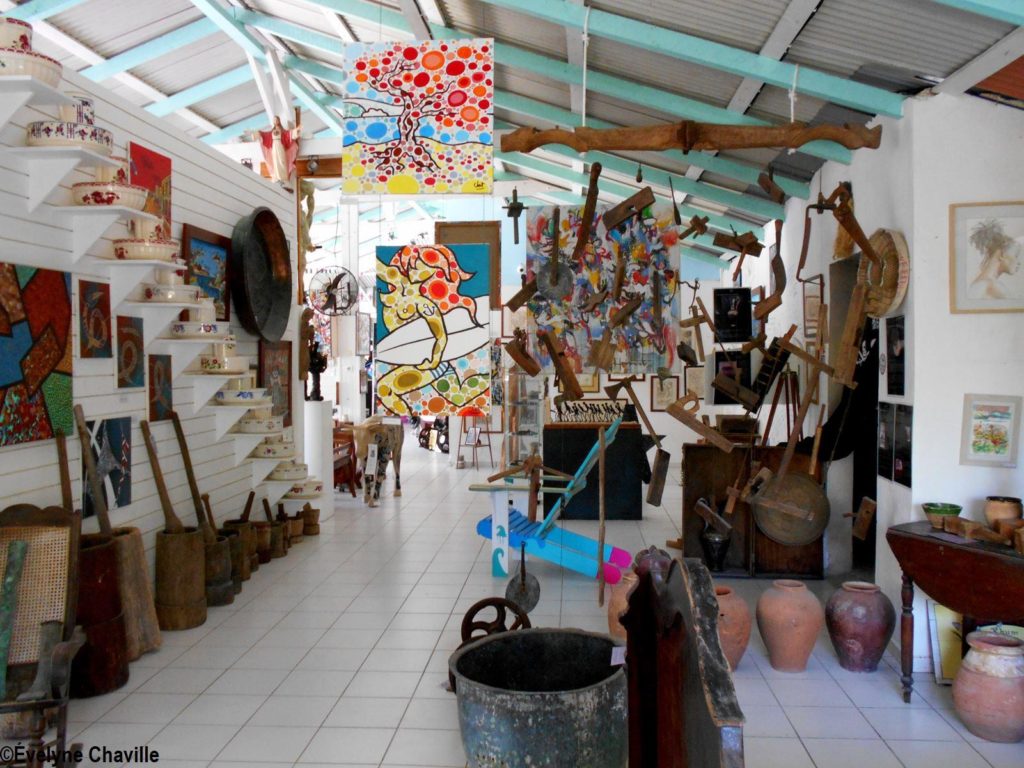
A part of the Guadeloupean heritage
Six years after its creation, Kréol West Indies found its place among the local cultural spaces. Many visitors come to admire contemporary works of art during temporary exhibitions but also to discover the permanent exhibition of a multitude of ancient objects dating from the 18th, 19th and 20th century and representing a part of the historical, economic, architectural and cultural past of Guadeloupe.
Indeed, with the Creole furniture, are proudly displayed naval officer’s binoculars, pocket sextant, slave chain, grindstone, mechanical sewing machine, radio, coins, demijohn, “karo” (in Creole) or iron, mortar and pestle, kerosene lamp, cassava grater, coco grater, filtration stone, artisanal roaster, massalé stone, cocoa stone, bottle, vase, jar, “chodo” (in Creole/Cream made with eggs and milk) pot, “chaltouné” (in Creole) or torch…in short, a large number of objects that our modernity drove into oblivion. Of course, if this visit is a total discovery for young people, for example schoolchildren, it causes a great nostalgia among our seniors…
Cultural animation is also one of the activities of Kréol West Indies with, among others, the “Night in the Museum” in which participate local artists (painters, visual artists, graffiti artists, singers, musicians, writers, poets, slammers, directors, etc.) and the public. On Saturday, April 7, at 7:30 pm, will be held the 13th edition of this quarterly meeting of the living arts around the theme of “Urban Maasai”.
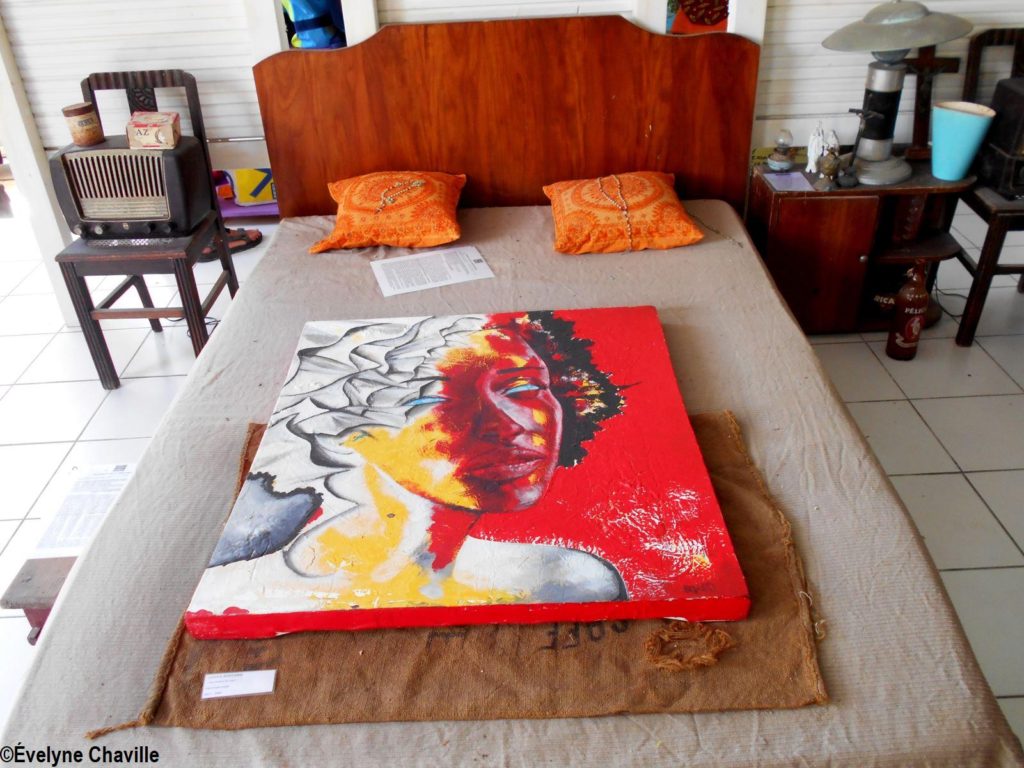
A market for contemporary Caribbean art
With its shop, Kréol West Indies participates in economic development by selling items of local handicrafts and in professional reintegration by selling bags made from recycled boat sails by disabled workers in the Établissements et Services d’Aide par le Travail – ESAT (Establishments and assistance services by work) in France. “I had found someone in Marie-Galante who wanted to make things from sails but she was affected by chikungunya and, now, joint pain in her hands does not allow her to consider this activity any more”, explained the owner of KWI.
The customers of Kréol West Indies are Guadeloupeans and tourists. This cultural space became an important market for contemporary Caribbean art, especially painting. There are works by local artists such as Jean-Marc Hunt, Félie-Line Lucol, Bénito, François Piquet, Yves Bercion, Catherine Plugiési-Conti, Piaf, Yeswoo and also international artists. “Tourists of several nationalities stop to visit us. There are Americans but we tend to forget the Russians who live in the United States and who come more and more to Guadeloupe since the opening of the lines by Norwegian Airways. These visitors also buy us paintings (…)”, he said.
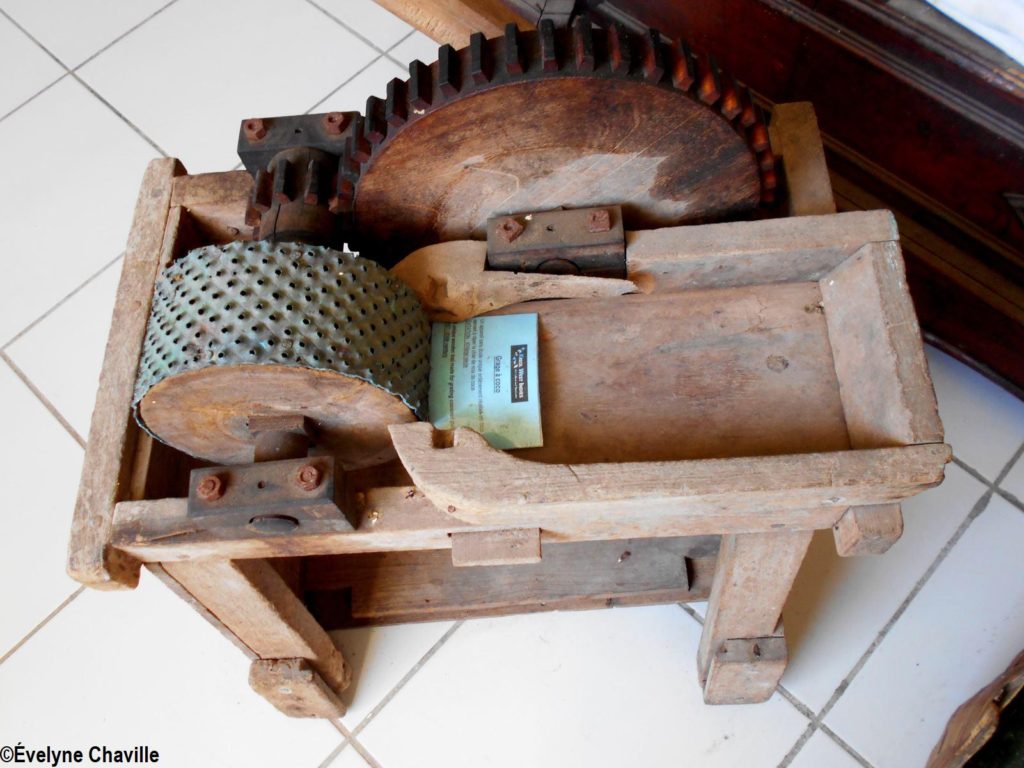
Art for humanitarian
In addition, the gallery-museum is involved in several humanitarian actions. Indeed, it helps “Terre d’Azur” which operates in West African countries (Togo, Benin, Senegal etc.) from where come some items sold in the shop and the proceeds go to this medical humanitarian association. It participated in “Mobilis for Haiti” as well as “Art for Irma and Maria”, this operation which consisted in selling works of art at auction on the Ebay website and in the gallery for the victims of these two hurricanes in the Caribbean islands, last year.
Today, Vincent Nicaudie divides his time between his two establishments. He finally found his true career path in our archipelago. “I have never been so happy. I have the good fortune of making a living out of my passion for ancient objects and contemporary art. I studied law and management but my parents, especially my mother who was an English teacher, passed on that passion for culture to me. In life, everything is linked”, he said.
























































